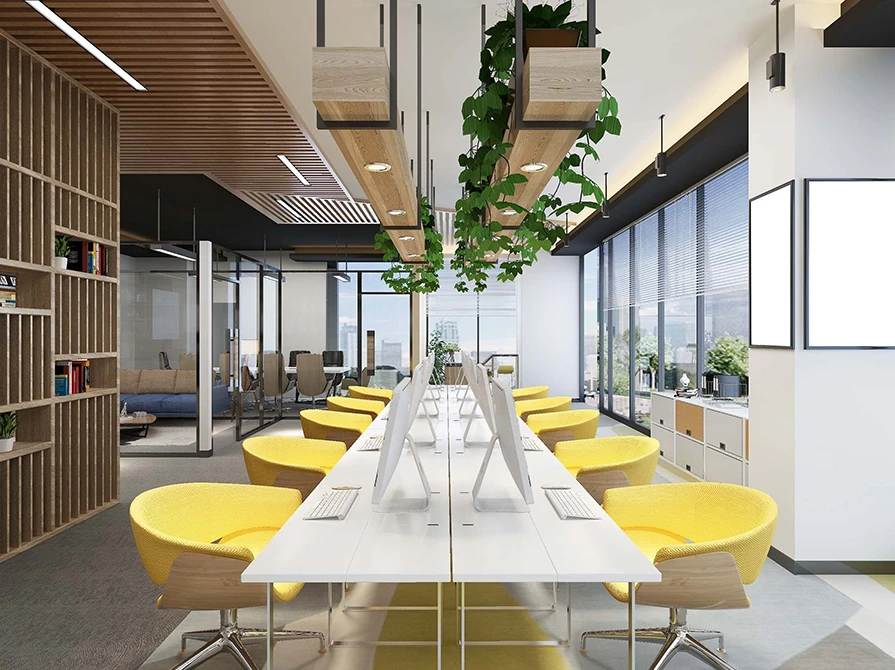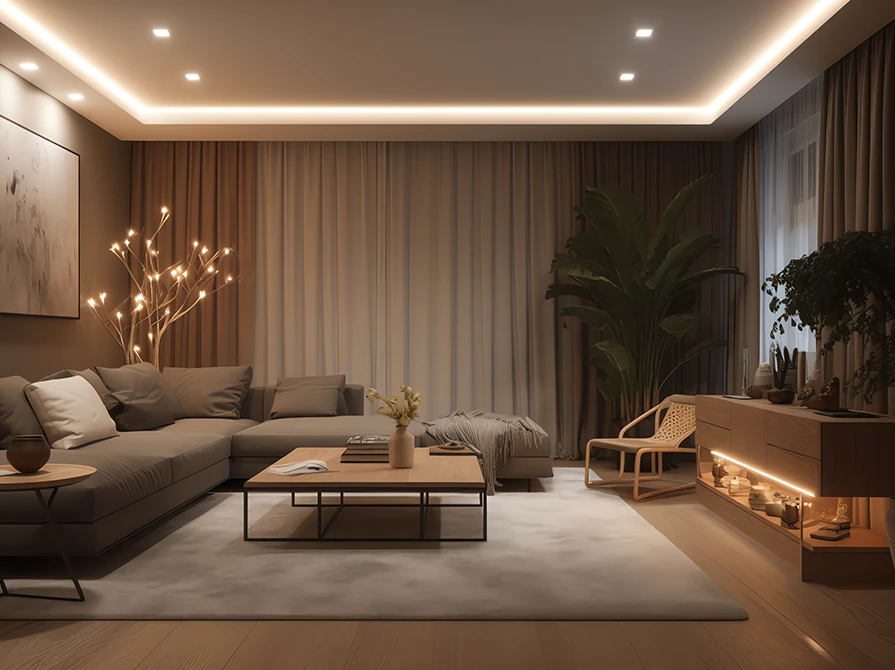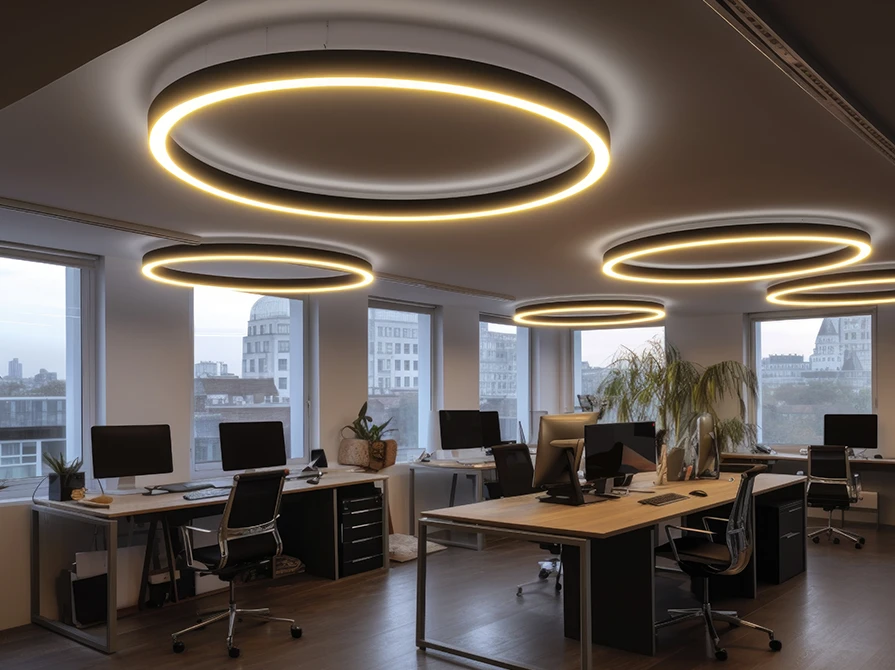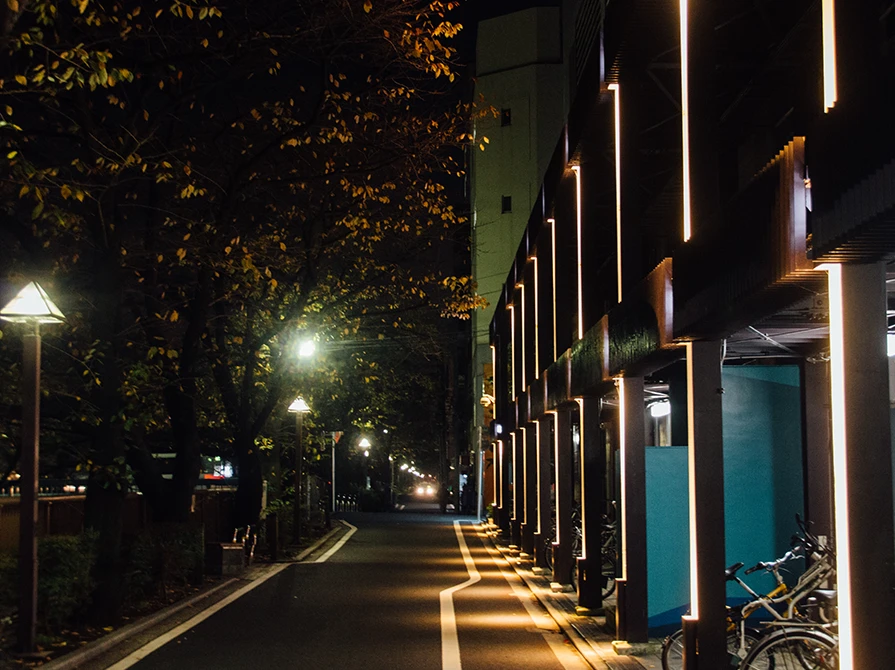


Imagine walking into a room that captivates your senses with its warm ambiance, highlights architectural features, and provides functional task lighting. This enthralling experience is the result of a well-executed technique known as light layering. In this blog, we will understand how light layering works, exploring its benefits, techniques, and the art of harmonizing different lighting elements. Get ready to elevate your space to new heights with the mesmerizing symphony of light!
Light layering is a lighting design technique that involves strategically combining multiple layers of light to create a dynamic and visually appealing environment. You can create a harmonious and balanced illumination scheme by integrating ambient, task, and accent lighting, with each layer serving a specific purpose. The goal is to achieve both functionality and aesthetics, enhancing the overall ambiance and functionality of a space.
Just as a strong foundation supports a structure, ambient lighting forms the base layer of light layering. This layer provides overall illumination and sets the tone for the space. Common ambient lighting sources include overhead fixtures, chandeliers, or indoor recessed lighting. By selecting the appropriate fixtures and controlling their intensity, you can establish a comfortable level of brightness that serves as a canvas for the other layers.
Task lighting is the hero of productivity, providing focused illumination for specific activities. Whether it's reading, cooking, or working at a desk, task lighting ensures optimal visibility and minimizes eye strain. Table lamps, under-cabinet lights, and adjustable desk lamps are popular choices for task lighting. Position these fixtures strategically to eliminate shadows and direct light where it's needed most, enabling users to perform tasks with ease and precision.
Accent lighting adds depth, drama, and visual interest to a space by highlighting architectural elements, artwork, or decor. It creates focal points and adds a touch of elegance and sophistication. Track lighting, wall sconces, and picture lights are often used for this technique. Experiment with different angles and intensities to create stunning effects and draw attention to specific areas or objects, adding layers of visual intrigue.
Just as a conductor controls an orchestra, you can orchestrate the lighting layers with dimmers and lighting control systems. Dimmers allow you to adjust the intensity of each layer, offering flexibility and control over the mood and functionality of a space. Lighting scenes go a step further by enabling pre-programmed lighting presets for various activities or occasions. With a simple press of a button, you can transform the ambiance to suit different needs, adding an element of enchantment to your space.
Achieving balance and harmony in light layering is an art form. Consider the size and purpose of the space, the activities that will take place, and the architectural features that should be emphasized. Experiment with layer placement, adjusting the position and angles of fixtures to create a cohesive visual flow. Ensure that the layers complement each other and avoid overpowering any particular layer, creating a symphony of light that delights the eye.
A well-executed light layering design requires fine-tuning and regular maintenance. Periodically evaluate the lighting scheme, making adjustments to bulb choices, fixture positions, or dimmer settings as needed. Keep an eye out for burned-out bulbs or any signs of wear and tear, and replace them promptly. To avoid frequent light replacements, use top-quality Wipro LED lights in your setup.
Light layering is a transformative technique that elevates spaces from ordinary to extraordinary. To ensure your lighting system sets your mood every time, consider adjusting colour temperature, using dimmers and lighting control systems, and maintaining a balanced composition according to the occasion. With the art of light layering in your hands, you can illuminate your spaces with brilliance and immerse yourself in the mesmerizing dance of light.







